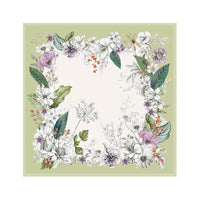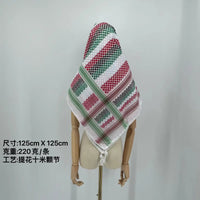When you think of Dubai, one of the world's most captivating desert destinations, you might envision towering skyscrapers, luxurious resorts, and endless dunes. But beyond the modern marvels, there's a rich tapestry of tradition that Arabs proudly uphold. In the six nations of the Gulf Cooperation Council – Bahrain, Qatar, Oman, the United Arab Emirates, Saudi Arabia, and Kuwait – traditional attire is not just a relic of the past; it's a living testament to cultural heritage. Enter the Ghutra, the iconic Arabic headscarf worn by men, a symbol of pride and identity. Join us as we delve into the history, styles, and the art of wearing this remarkable piece of fabric.
The Essence of the Ghutra
Imagine a square piece of cloth, crafted from soft cotton, adorned with classic white or a striking red and white checkered pattern. This is the Ghutra, also known by its aliases, the Keffiyeh or Shemagh. More than just a head covering, it's a statement of national pride. In the UAE, the Ghutra is a pristine white, complemented by a black Agal, worn in harmony with the traditional thobe.
A Journey Through Time
The Ghutra's tale begins in the pre-Islamic era when Bedouins draped it over their heads to shield themselves from the scorching sun and blinding sandstorms during their migrations across Saudi Arabia. Its history is also intertwined with military lore, with some believing it was adopted by soldiers during the British Protectorate. Originally crafted from goat or camel hair, with the Agal – a circular band – woven from twisted wool or camel hair, the Ghutra has evolved, yet retained its timeless charm.
Mastering the Art of Wearing the Ghutra
Ready to embrace this cultural icon? Here's a step-by-step guide to donning the Ghutra with finesse:
-
Choose Your Ghutra: For formal affairs, opt for the elegant white Ghutra. A checkered one is perfect for more casual settings, like a visit to a friend's home.
-
The Fold: Lay your Ghutra flat and fold it into a triangle, ensuring even edges for a balanced look.
-
Positioning: Place the triangle's longest side across your forehead, covering the crown of your head.
-
Securing the Sides: Bring the two corners to the back, overlapping them gently to ensure a snug fit.
-
The Agal's Touch: Slide the Agal over your ears, securing the Ghutra in place. Adjust for comfort and symmetry.
-
Fine-Tuning: Check your reflection, making any necessary tweaks. The Ghutra's front edge should rest comfortably on your forehead.
-
The Final Flourish: Give it a once-over, ensuring the checks are aligned and everything is in place.
Exploring Ghutra Styles
The Ghutra isn't a one-size-fits-all accessory. Here are some stylish variations:
-
Cobra Style: For a dramatic flair, fold the Ghutra into a triangle, placing the point at the back. Iron for a sharp forehead crease, secure with the Agal, and fold the ends to create the cobra's hood.
-
Eagle Style: Let the Ghutra drape over your shoulders, then encircle one shoulder from the front and swing the other side to complete the look.
-
The Teacher's Style: Keep it simple with this classic. Wear the Ghutra with ends hanging down your back, secured with the Agal.
Fascinating Ghutra Facts
-
Regional Flavors: Each region and country adds its unique twist to the Ghutra's design and color.
-
Fashion Fusion: Modern designers and influencers have seamlessly integrated the Ghutra into contemporary fashion.
-
Protective Elegance: More than just stylish, the Ghutra guards against the elements – sun, wind, and sand.
-
Status Symbols: The Agal's twists and material once conveyed the wearer's status, with leaders and chieftains donning it as a badge of authority.
-
Material Matters: Ghutras are crafted from cotton, silk, and linen, while Agals are traditionally black cord.
-
Ceremonial Grace: The Ghutra graces religious events and ceremonies, adding a touch of tradition to solemn occasions.
Conclusion
The Ghutra is not merely a piece of fabric; it's a bridge to the past, a celebration of culture, and a mark of pride. It transcends fashion, embodying the timeless traditions of the region. So, why not experience this living piece of history yourself? Book a desert safari tour in Dubai and let the desert winds carry you through tales of tradition and adventure.
Frequently Asked Questions (FAQs):
-
Can Women Wear the Ghutra?
While the Ghutra is traditionally worn by men, women can certainly embrace its patterns in their own attire, like scarves. -
Where is the Ghutra Worn?
The Ghutra is a staple in the UAE, Bahrain, Saudi Arabia, Kuwait, Iraq, Syria, Jordan, and Egypt. -
Why Wear a Ghafiya Underneath?
A white cap called the Ghafiya is worn beneath the Ghutra to keep the head cool and prevent slipping. -
Is the Ghutra Exclusive to Locals?
Absolutely not! The Ghutra's charm is universal, and anyone can wear it to embrace this cultural gem.





